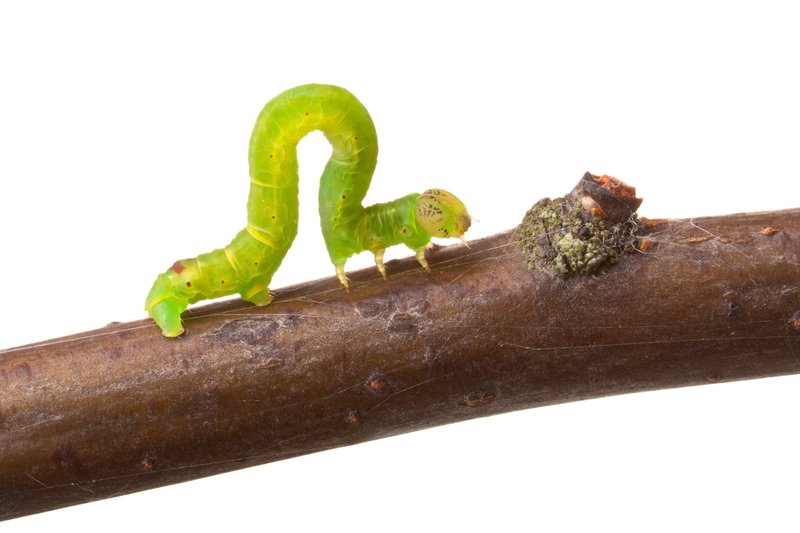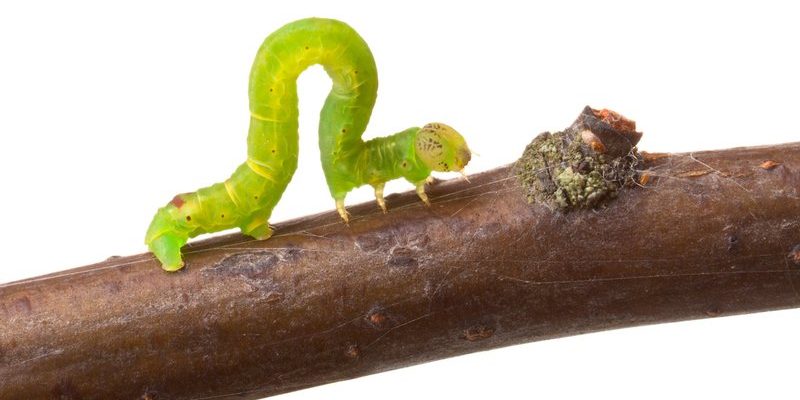
Inchworms are actually caterpillar larvae from moths like the geometrid moth. Their name comes from their distinctive way of moving, where they appear to measure out the distance they travel, like tiny little architects on a mission. Now, while it might seem fun to catch one and observe it up close, the reality is that inchworms have specific needs that can be tricky to meet indoors. Honestly, it’s a bit like trying to host a summer picnic in the middle of winter—it just doesn’t work out.
Understanding Inchworm Biology
Inchworms have a fascinating life cycle, starting as eggs laid on leaves. Once they hatch, they spend their days munching on foliage and growing. After feeding, they eventually form a chrysalis and transform into moths. This whole process takes place in specific conditions that provide the right balance of temperature, humidity, and food availability.
You might be surprised to learn that inchworms are normally found in gardens, forests, and other outdoor spaces where their diets consist mainly of leaves from various trees and plants. When it comes to their inside life, they generally don’t have access to this natural buffet.
Here’s the thing: while they can survive for short periods indoors, they likely wouldn’t thrive. If they don’t have the right food or their environment isn’t suitable, they could easily become stressed or die. Therefore, if you decide to bring one inside for a closer look, you need to think carefully about what they need to survive.
Ideal Conditions for Inchworms
If you’re curious about inchworms and want to keep one as a temporary pet (with the best of intentions, of course), it’s important to create an environment that mimics their natural habitat as much as possible. They need live leaves from their usual food sources, like oak or maple trees. Simply plucking them from the tree outside and tossing them into a jar won’t cut it.
Here’s what you can do to set them up for success indoors:
- Food: Ensure they have fresh leaves to munch on every day.
- Humidity: Strive for a humidity level around 50%–70% to replicate their natural moisture levels.
- Temperature: Keep it cooler—around 60°F to 70°F is ideal.
- Space: Provide enough room so they can stretch out and move freely.
You might be wondering if you can create the perfect setup just by using ordinary things from around the house. While it’s possible to get creative, remember that without the right food and conditions, an inchworm’s time inside could be cut short.
The Challenges of Keeping Inchworms Indoors
While keeping inchworms indoors can be a fun experiment, several challenges come with it. For starters, **food sourcing** can turn into a hassle. Fresh leaves need to be available daily. If you’re not going outside to collect them or your local plants are damaged, it could lead to a problem quickly.
Another challenge is maintaining **humidity**. Homes tend to have dry air, especially during the winter. You might need to mist the leaves or use a small tray of water to help boost moisture in their habitat. Just be careful not to drown them!
Temperature is another factor to consider. Indoor heating can create warmer pockets of air that inchworms just don’t like. They might feel uncomfortable, leading to stress, which can affect their overall health and longevity. Keep an eye on the thermostat, and avoid placing them near heat sources like radiators.
Can Inchworms Breed Indoors?
Breeding inchworms indoors can be quite tricky. Generally, inchworm larvae (caterpillars) go through various instars before they pupate and become moths. To breed inchworms, they need access to **the right mates** and the right conditions to thrive and lay eggs.
Simply put, if you’re interested in inchworm reproduction for a home project, it may not be the easiest task. The chances of them successfully mating and laying viable eggs in your living room are slim, mainly because of their delicate needs and environmental specifics. You might find that inchworms aren’t the best candidates for indoor breeding.
What Happens If You Release Them?
If you’ve decided that keeping an inchworm isn’t working out, you might wonder what to do next. The great news is that releasing them back into nature is usually a pretty good option. They’re adaptable little guys, so they should adjust well back to their outdoor environment, especially if you release them close to where you found them.
However, it’s wise to take some precautions:
- Make sure to choose a location with plenty of their preferred food available.
- Check for any predatory species before releasing them.
- Release them during suitable weather conditions—mild temperatures and dry weather are best.
By being thoughtful about their release, you give the inchworm its best shot at survival in the wild once again.
Keeping Nature in Perspective
In the end, inchworms can survive briefly indoors but thrive outdoors where they belong. If you’re considering bringing them inside, think of it like inviting a friend over for a party: you need to ensure they’re comfortable. While this small creature can make for a fascinating observation, they really are best left in their natural habitat.
If you’re intrigued by these little guys, maybe it’s worth cultivating a small outdoor garden or space where you can observe them in their element. Just think of all the life happening in your backyard, and you’ll likely find plenty of inchworms busy going about their day.
So the next time you see an inchworm, remember their amazing journey and consider stepping back to let nature do its magic. They may be small, but they play essential roles in our ecosystem.

